10 Things You Should Know About Wrestling and Concussions
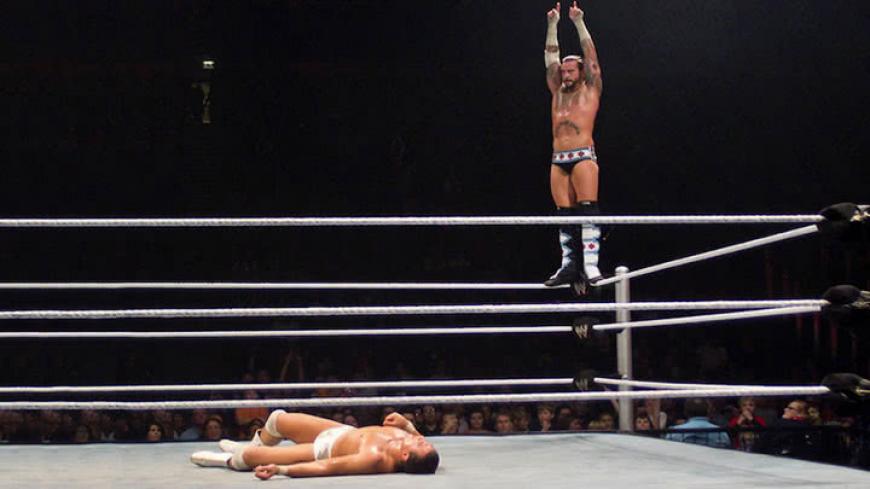
1. DOZENS OF WRESTLERS HAVE SUED THE WWE OVER CONCUSSIONS AND UNFAIR CONTRACTS.
In July 2016, more than 50 wrestlers filed a lawsuit against World Wrestling Entertainment, Inc. (WWE) alleging that the company had recklessly endangered its performers, concealed the dangers of head injuries, misclassified wrestlers as “independent contractors,” and neglected its own Talent Wellness Program (including neurological testing/the concussion protocol).
The plaintiffs included Jimmy “Superfly” Snuka, Road Warrior Animal, “Mr. Wonderful” Paul Orndorff, Chavo Guerrero Sr., Chavo Guerrero Jr., King Kong Bundy, Marty Jannetty, Sabu, Mark Jindrak, and referees Dave and Earl Hebner.
This isn’t the first time wrestlers have sought redress from the WWE, of course. In 2008, a trio of former wrestlers—Scott Levy (aka Raven), Chris Klucsarits (aka Kanyon), and Mike Sanders—filed a lawsuit against the WWE over their independent contractor statuses. (You can read the full complaint here.) Given their fulltime (and then some) hours and the exclusivity of their WWE contracts, they felt—justifiably—that they were owed basic insurance and retirement benefits.
But the following year, the judge threw the case out due to the statute of limitations. The WWE has proved somewhat Teflon in court, save Jesse Ventura winning $800,000 in 1991 for owed royalties (more on him later).
In April 2016, the NFL settled a $1 billion lawsuit with 20,000 retired football players who—like the 50 wrestlers who sued the WWE over concussions—felt their employer had misled them about the risks of repeated head trauma. The key difference is that those players were fulltime employees of the NFL, not independent contractors, and they had proof that the NFL had masked and downplayed the risks.
Still, the 2016 WWE suit was modeled after the NFL one (as was the NHL concussion lawsuit), and if the judge determines that the statute of limitations does not apply, as the plaintiffs argue, it could net the wrestlers some small measure of justice for their myriad health issues and titanic medical bills.
Regardless of how this case and others play out, the way the WWE treats its performers has to change. Their lives depend on it.
2. CHRIS BENOIT AND ANDREW “TEST” MARTIN HAD CTE.
Many chalked up WWE star Chris Benoit’s horrific double-murder/suicide to “roid rage”—a steroid-induced belligerence that is most likely a myth, as suggested by a 2014 study in the medical journal Addiction and the acclaimed 2008 documentary Bigger, Stronger, Faster*.
Dr. Julian Bailes—co-director of the Brain Injury Research Institute—told ABC News, “There’s no consensus in the medical community that this issue of ‘roid rage… even exists.”
Dr. Bennet Omalu is the world’s foremost expert on CTE (chronic traumatic encephalopathy), and co-director of the BIRI with Dr. Bailes. (He was the subject of the 2015 Will Smith film Concussion, in which Dr. Bailes was played by Alec Baldwin.) Dr. Omalu says that Chris Benoit’s unspeakable actions were driven not by steroids but by the untold blows to the head he received over his 22-year wrestling career.
One of Benoit’s signature moves was a diving headbutt off the top rope. He once told Chris Nowinski, a former wrestler and medical doctor whose own career was cut short by head injuries (among others like Daniel Bryan, Corey Graves, and Christian), that he had suffered "more concussions than he could count."
Jonathan Coachman, who worked as a WWE announcer from 2003 to 2008, said he experienced “between 10 and 20 concussions” over that time—or 2-4 a year.
Nowinski, too, recalls wrestling “with bad headaches, and in a fog every night.” After retiring from the sport, he founded the Concussion Legacy Foundation, through which he has collaborated with Dr. Omalu.
Dr. Omalu examined Benoit’s brain after his suicide and said it resembled that of an 85-year-old man with Alzheimer’s. Benoit was 40.
He also conducted an analysis of the brain of Andrew “Test” Martin, a former WWE wrestler who died at age 33 from an oxycodone overdose. Martin, too, showed signs of CTE.
3. THEY AREN’T THE ONLY ONES.
In a 2009 Outside the Lines story, Dr. Bailes said, “With Andrew Martin as the second case, the WWE and the sport in general have to ask themselves, 'Is this a trend?' The science tells us that jumping off 10-foot ladders and slamming people with tables and chairs is simply bad for the brain.”
In response, the WWE doubted the “veracity” of the tests, adding:
Dr. Omalu claims that Mr. Benoit had a brain that resembled an 85-year-old with Alzheimer's, which would lead one to ponder how Mr. Benoit would have found his way to an airport, let alone been able to remember all the moves and information that is required to perform in the ring.
The dense denial of those remarks is astounding. The WWE seemed to suggest that Benoit was of sound mind when he murdered his wife and son and then hanged himself on a weight machine, with Bibles laid out next to his loved ones’ bodies.
At least 20 wrestlers have killed themselves, including Benoit, Chris Kanyon, Mike Awesome, Sean O’Haire, Crash Holly, Tojo Yamamoto, Yukon Eric, “The Renegade” Rick Wilson, and Kerry Von Erich. Many suffered from depression and other mental disorders symptomatic of CTE. Kanyon reached out to Chris Nowinski before he died, saying he'd had at least 12 concussions and felt they had impacted his mental health. Nowinski "would not be surprised if Chris [Kanyon] was suffering from CTE when he passed away."
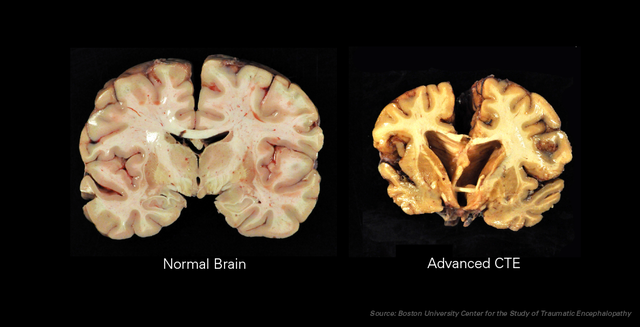
Kanyon and the other names above belong in the same category as former football players like Junior Seau, Andre Waters, and Terry Long—all of whom showed signs of CTE and its resulting mental disorders, and all of whom committed suicide.
For many, Benoit’s actions may evoke O.J. Simpson, whom Dr. Omalu has said he would “bet [his] medical license” has CTE, a condition that would help explain Simpson's violent behavior and suicidal ideations.
In 2015, Jimmy “Superfly” Snuka, one of the plaintiffs in the concussion lawsuit, was charged with the 1983 murder of his girlfriend Nancy Argentino. But in June 2016, a judge ruled Snuka mentally unfit to stand trial. Snuka did not know what year it was, and could not name the current President. (He would be reevaluated later that year.)
Given the state of Snuka’s, Benoit’s, and Martin’s minds, and the never-ending rash of industry deaths and suicides, it’s no wonder that wrestlers like Mick Foley, Kevin Nash, Rob Van Dam, and Chyna (R.I.P.) have all pledged to donate their brains to science after they pass.
4. DANIEL BRYAN RETIRED BECAUSE OF CONCUSSIONS.
Over the past several years, the WWE (like the NFL) has overhauled its concussion policy. It has banned dangerous maneuvers like Tombstone Piledrivers and chairshots to the head. Wrestlers who experience concussion symptoms must pass an ImPACT test and be cleared by doctors before returning to the ring. (For example, in May 2016, “Certified G” Enzo Amore missed three weeks after suffering a concussion at the Extreme Rules pay-per-view.)
One superstar whom WWE doctors would not clear was underdog-turned-top dog Daniel Bryan. In February 2016, the 34-year-old Bryan shocked the world by retiring at the peak of his powers. He did so with tears soaking his beard, telling the crowd:
Within the first five months of my wrestling career, I’d already had three concussions. For years after that, I would get a concussion here and there… and it gets to the point when you’ve been wrestling for 16 years that it adds up to a lot of concussions.
Bryan, who has reportedly suffered seizures from his numerous head injuries, added, “Maybe my brain isn’t as okay as I thought.”
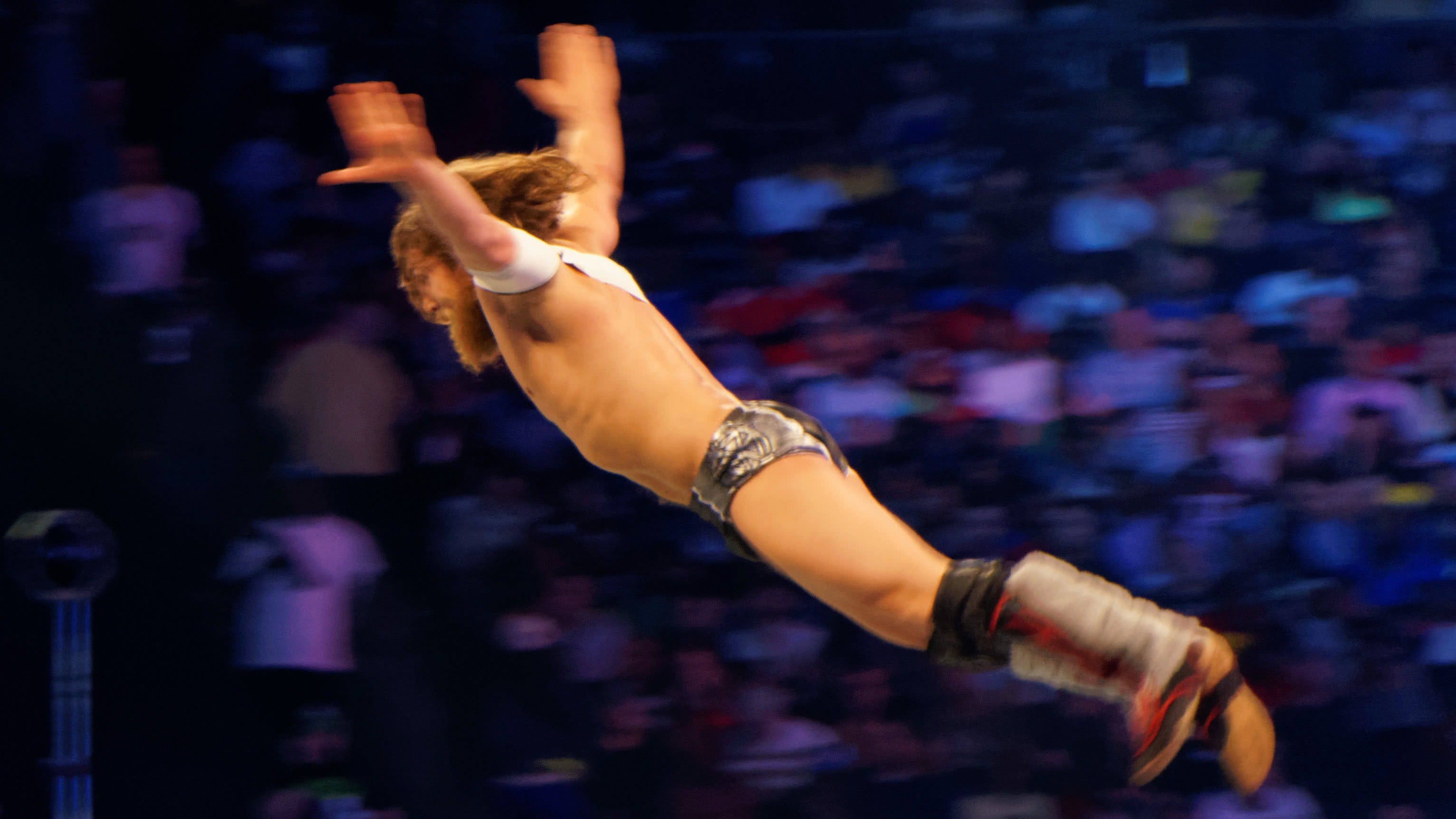
Bryan later told ESPN’s Jonathan Coachman that he’d had ten “documented” concussions, “But you can’t document them all.” Like Chris Benoit, Daniel Bryan often launched himself headfirst from the top rope.
The WWE deserves credit for telling Daniel Bryan “No,” and for instituting a concussion protocol a la the NFL’s (if only for PR reasons). But questions remain about the aim and efficacy of that protocol, and the quality of company doctors.
5. THE WWE’S MEDICAL DIRECTOR DOESN’T THINK CTE IS A BIG DEAL.
The WWE’s Medical Director, Dr. Joseph Maroon, is infamous for downplaying the prevalence and gravity of CTE. (He is played by Arliss Howard in the film Concussion; it is not a flattering portrait.) He calls the issue “over-exaggerated” and says that riding a bike or a skateboard is more dangerous than playing football. Though Dr. Maroon made the right call with Daniel Bryan, in general it’s hard to believe that he will take concussions and CTE as seriously as he should.
In a jaw-dropping interview on The Art of Wrestling podcast, former WWE Champion CM Punk—who, like Daniel Bryan, retired early for his health—said that the WWE medical staff allowed him to wrestle with concussions and other serious injuries despite his pleas for treatment. Punk said that post-concussion syndrome brought him to his knees after many matches, "and I’m either puking for real or I’m just dry heaving because I don’t have anything in my stomach. I have no appetite. I don’t know what is up and what is down. I can’t sleep. I can’t f***ing train."
During the 2014 Royal Rumble—not coincidentally, his last match in the WWE—Punk claims that he rolled into the corner of the ring and told the doctor he was concussed, and that the doctor essentially replied:
¯\_(ツ)_/¯
(The doctor in question, Chris Amann, sued Punk and podcast host Colt Cabana for defamation, seeking $1 million in damages. That case was scheduled to go to trial in June 2016 and presumably has been settled.)
Punk also said (in stronger/bluer terms) that the WWE’s concussion test is a joke, that he passed it when everyone knew he was concussed. He believes that the WWE’s and NFL’s much-hyped concussion protocols are simply PR moves: “WWE doesn’t do anything to protect the wrestlers; they do things to protect themselves.”
Wrestling writer and podcast host David Shoemaker (aka The Masked Man) agrees, writing, “of course the WWE’s concussion policy is driven by PR concerns… And what’s more, that’s exactly why the NFL is doing it too.”
Given the impossible gauntlet that the WWE inflicts upon its wrestlers, and the Independent Contractor status with which it saddles them, it’s hard to argue with Shoemaker or Punk.
(Click below for Part 2.)
6. WRESTLERS DON’T GET TIME OFF UNLESS UNTIL THEY’RE HURT.
Wrestlers spend 300 days a year on the road, and 250-275 nights hurling their bodies around the squared circle and crunching them into the mat—indefinitely. Unlike football and hockey players (the other athletes most closely associated with head injuries), wrestlers do not get an offseason.
Football and hockey players put their bodies and brains through hell for about half the year, which many analysts and fans consider excessive, even dangerous. For wrestlers, the collisions occur year-round, not stopping until they are injured seriously enough for time off, or (big picture) until they retire, which many can never afford to do in earnest. (Base salaries start around $35,000.)
In the August 2015 GQ piece “How WWE Wrestlers Stay Fit on The Road,” Mick Rouse asked headliners Seth Rollins and Roman Reigns, “How do you keep your body from falling apart?” from the relentless grind.
Seth: That’s impossible, basically. The recovery is impossible. We do the best that we can, but our season doesn’t end. For the past three years, I haven’t had any extended period of time at home. The longest stretch I’ve had at home is four days in three years. And that’s legit.
Roman: The recovery process is a myth. I don’t think there is such a thing.
Three months later, then-WWE Champion Rollins shredded his MCL and ACL during a live event in Dublin, Ireland. (He was stripped of the title and missed nine months of action.)
In June 2016, Roman Reigns was suspended 30 days for violating the WWE’s wellness policy. (Reigns returned just in time to headline the Battleground pay-per-view.)
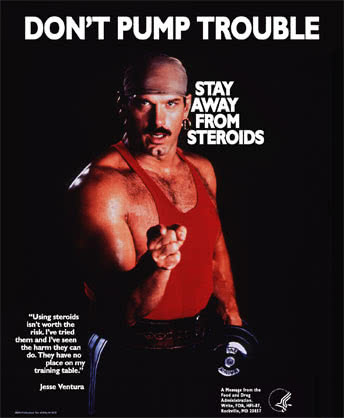
In the Art of Wrestling interview, CM Punk said that after tearing his MCL, PCL, and meniscus in a WrestleMania showdown with the Undertaker, he thought to himself, “This is the only way I can get time off. I have to kill myself to get time off.”
Offseasons are essential to an athlete’s recovery and to curbing the amount of head trauma sustained in a given year or career. In the OTL story, retired WWE wrestler Dawn Marie estimates—conservatively—that many wrestlers sustain 5,000 blows (or “bumps”) per year. Fighting back tears, she says, “Oh, my god. I wonder what’s going on in my brain right now.”
The WWE could drastically reduce the number of blows by installing an offseason—thereby saving wrestlers’ brains, and maybe their lives. Vince McMahon could do so without alienating fans, stalling storylines, or losing revenue, as outlined by David Shoemaker.
The company could also protect its employees by acknowledging that they are in fact employees, and by giving them the insurance and retirement benefits they so desperately need.
7. WRESTLERS ARE CLASSIFIED AS “INDEPENDENT CONTRACTORS.”
Scott Levy (Raven), Chris Kanyon, and Mike Sanders may have had their 2008 case thrown out, but they were right: by any reasonable measure, WWE wrestlers are fulltime employees. They work five days a week, and they work only for WWE thanks to a non-compete clause. Factoring in travel and promotional events, wrestlers actually devote drastically more time (and energy, and heart) to their jobs than those of us carping about Carpal Tunnel from the comfort of a swivel chair.
And yet, thanks to an arcane system that CM Punk has compared to indentured servitude, wrestlers are classified as independent contractors. (IC status did make sense 40 years ago, when wrestling promotions were regional.) This means:
- Wrestlers have no union.
- They can be fired at will.
- They have to pay for their own insurance.
- They have to file/pay taxes in every state in which they perform (which is almost all of them).
- They have to pay their own travel expenses. (It bears repeating: wrestlers are on the road about 300 days a year.)
- They don’t have a 401k or any other retirement benefits. (Exception: an annual drug rehab offer that Vince McMahon has said outright is for “Two words: Public. Relations.” Nice guy!)
If anyone needs health insurance, retirement, and general protection, it’s a professional wrestler. They grind their bodies and minds into oblivion for their passion, and at the end of the day have scraps to show for it—if they even make it out alive.
Chris Kanyon suffered from bipolar disorder and depression, most likely caused or exacerbated by CTE. By suing the WWE (and losing), he essentially ended his wrestling career and compounded his mental health issues. In 2010, Kanyon wrote his family an apology note and intentionally overdosed on antidepressants in his Sunnyside apartment. He was 40 years old.
The WWE never acknowledged his death.
8. THEY HAVE NO UNION.
The WWE likes to emphasize that it will pay to treat or repair injuries sustained in the ring—but that’s only while the performer is under contract at WWE. What about five, ten, 20 years down the road?
Like football players and hockey players, many wrestlers cripple their bodies and minds doing what they love—permanently. Knee and back injuries, substance abuse, head trauma, depression: these issues don’t evaporate once someone hangs up the tights. In many cases—like Jake the Snake Roberts, Scott Hall, Kanyon, and others—they loom even larger and darker over retirement.
Darren Aronofsky captured that fact beautifully in the brilliant Oscar-nominated film The Wrestler (2008), in which Mickey Rourke’s Randy “The Ram” Robinson struggles to cope with (or even survive) life after wrestling. The Ram lives in a trailer, scraping by on odd jobs, autographs, and smalltime shows, wrestling against a doctor’s advice. He plays an 8-bit videogame to relive the glory days, and battles nasty addictions he acquired on the road. It’s a powerful film, one that embodies so many of the industry’s demons, and one every wrestling fan should watch. (See also: The Resurrection of Jake the Snake.)
After The Wrestler’s release, Aronofsky campaigned (in vain) for wrestlers to be admitted into the Screen Actors Guild (SAG), stating:
I think the problem starts with the fact that they’re not organized and they’re not unionized. That’s the main problem. I mean, there’s really no reason why these guys are not in SAG. They’re as much screen actors as stuntmen, if not more. They’re in front of a camera performing and doing stunts, and they should have that protection.
More than 20 years earlier, in 1986, WWE star (and later, governor of Minnesota) Jesse “The Body” Ventura sought that protection by trying to form a union.
The result? Ventura couldn’t find enough wrestlers to join the cause, Hulk Hogan snitched on him to Vince McMahon, and McMahon threatened to fire him.
9. ANY WRESTLER WHO TRIES TO UNIONIZE WILL BE FIRED.
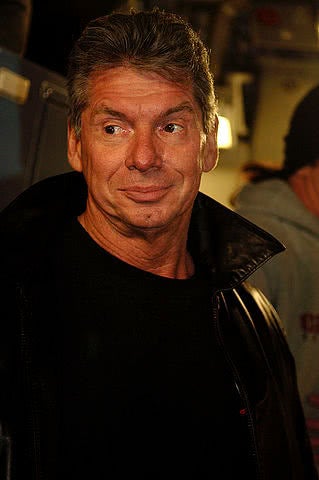
The story would be the same today. The system works for the guys at the top—think John Cena, The Rock, Triple H, and Brock Lesnar—because they make millions of dollars every year. They don’t want to unionize because their interests don’t align with the guys at the middle or bottom of the card. They work less often for more money: why would they want to level the playing field?
This is why marquee names like John Cena always sidestep the union question while they’re still active, or even discourage organization. (Retired stars like Bret Hart and Roddy Piper, rest his soul, are a different story.) Hogan told McMahon about Ventura’s union plans because he wanted to preserve the system that had made him a household name.
For the rest of the guys, there is simply too much at stake to pursue unionization. McMahon threatened to give The Body the pink slip. He blacklisted Raven and Kanyon because of their lawsuit. He would do the same to any active wrestler who challenged the framework today. It could very well end their careers, and professional wrestling does not exactly lend itself to a lot of other industries.
Asked by Wrestling Inc. if he still thinks wrestlers should unionize, Ventura said:
Absolutely! How backwards could it be?... I had to pay for my own health insurance for me and my family. It was costing me $5000 a year. If we had a union, maybe that could be diminished to $2000 a year. There's strength in numbers. You could have retirement. I took the gamble and sued Vince and beat him in 1990. He still sends me quarterly checks. Anything I appear on, he has to pay me for.
(Note: This was an extraordinary win for The Body. Wrestlers don’t receive royalties from internet subscriptions, VOD, TV licensing, commentary, and voiceover work.)
All fulltime employees should be entitled to health insurance and retirement plans—especially if their jobs put their bodies and minds through a buzz saw. The WWE, though, clings to its outdated structure, chewing up its performers and spitting them out.
For proof, look no further than the obituaries.
10. WRESTLERS DIE EARLY AND OFTEN.
Wrestling deaths have spawned a weekly column, a poetry collection, and countless films, blog posts, video tributes, and websites (here’s one). The industry’s relentless casualties have also inspired several studies that flesh out these spectral anecdotes with a growing body of evidence. Their conclusions are grim.
In 2014, FiveThirtyEight asked, “Are Pro Wrestlers Dying at an Unusual Rate?” That study concluded that the mortality rate among wrestlers aged 35-45 is five times as high as expected based on actuarial estimates. It is also significantly higher than other athletes’, who pass away at a lower-than-expected rate.
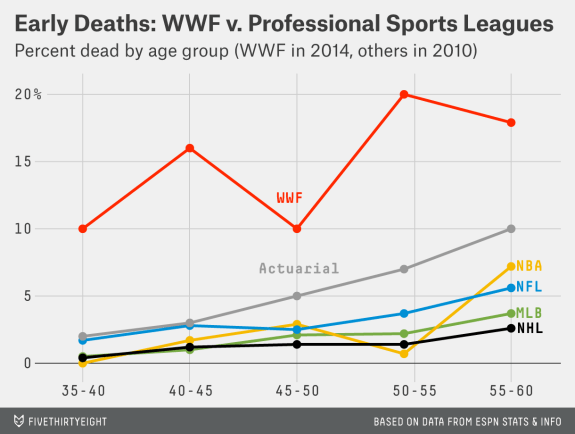
But the FiveThirtyEight study, while revealing, most likely downplayed wrestlers’ mortality. That’s because the subjects of the study were “all WWF wrestlers who are/would be younger than 60 in 2014, and who had at least 20 pay-per-view appearances between WrestleMania I in 1985 and… 2002—for 203 in all.”
Why does this matter? Well, if a wrestler had at least 20 pay-per-view appearances, he or she was a very successful wrestler. The wrestlers who met these criteria made significantly more money than the average (from royalties and merchandise, in addition to their contracts), and thus could afford better medical care, rehab, therapy, etc., which would presumably prolong their lives.
In other words, by focusing on wrestlers who starred in at least 20 pay-per-views, as opposed to most or all of the WWF roster over this period, FiveThirtyEight most likely skewed the data in a way that would reduce the mortality rate among wrestlers. Even then, the rate of early death was five times higher than expected.
The BBC highlighted a University of Eastern Michigan study which found that of the 62 wrestler deaths researchers analyzed, nearly 80 percent (49) occurred before the age of 50. Nearly half (24) occurred before the age of 40.
USA Today’s findings were even more disturbing (emphasis ours):
The costs are high. Wrestlers have death rates about seven times higher than the general U.S. population, says Keith Pinckard, a medical examiner in Dallas who has followed wrestling fatalities. They are 12 times more likely to die from heart disease than other Americans 25 to 44, he adds. And USA TODAY research shows that wrestlers are about 20 times more likely to die before 45 than are pro football players, another profession that’s exceptionally hard on the body.
While there is no definitive database of wrestler deaths, RIP Dead Wrestlers features an extensive record of industry casualties dating all the way back to Yusuf Ismail (aka Youssouf Ishmaelo) in 1898.
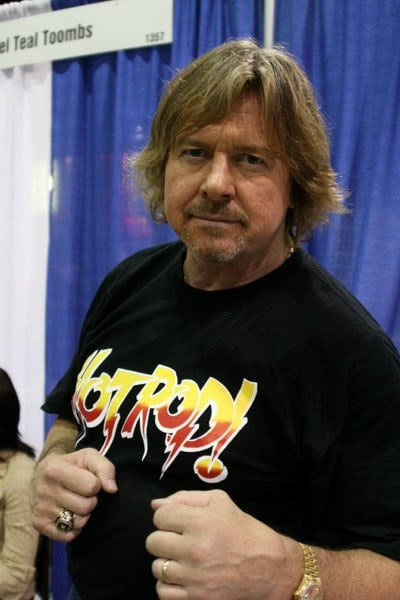
From 2006 to 2016, RIP Dead Wrestlers lists more than 200 wrestler deaths, including recognizable names like Chyna (1969-2016), Rowdy Roddy Piper (1954-2015), Dusty Rhodes (1945-2015), The Ultimate Warrior (1959-2014), Viscera aka Big Daddy V (1971-2014), Doink the Clown (1957-2013), Paul Bearer (1954-2013), Macho Man Randy Savage (1952-2011), Chris Kanyon (1970-2010), Umaga (1973-2009), Andrew “Test” Martin (1975-2009), Brian “Crush” Adams (1964-2007), Chris Benoit (1967-2007), Sensational Sherri Martel (1958-2007), Bad News Brown (1943-2007), Mike Awesome (1965-2007), and Bam Bam Bigelow (1961-2007).
The average lifespan in the United States is 79 years. None of the wrestlers above made it to 70. Most didn’t make it to 60.
Half of them didn’t live to see 50.


